Hooked on the Naked Scientists? This week we're looking into the science of addiction, finding out how smoking alters the teenage brain, why a mixture of brain chemistry and psychological habits make drugs hard to kick, and how addiction re-wires the brain in a similar way to school. Also, how a good night's sleep could stave off diabetes, why traffic pollutes your IQ and why your next prescription could be a placebo! Plus we bring you the first in our series of Rising Stars, young researchers reporting from the coalface of science, and in Kitchen Science we show you how to levitate a squid!
In this episode

- Why do I get headaches when I stop drinking coffee?
Why do I get headaches when I stop drinking coffee?
We put this question to Professor Barry Everitt, Professor of Behavioural Neuroscience here Cambridge University. You can read and listen to an interview with him here.
Well, what happens - if you're going to have an addition this isn't a bad one to have because it's (a) quite trivial and (b) quite easy to relinquish. What happens with people who drink coffee and drink coffee very frequently is that they develop tolerance to the caffeine that's in the coffee. As they develop tolerance to the caffeine: when the caffeine isn't there they experience discomfort in the form of withdrawal which can be things like a headache and it can be also maybe minor mood changes but sometimes even things like palpitations that come with withdrawal from caffeine. You then take more caffeine and you have to do that more and more frequently until eventually you have a situation where people are drinking vast quantities or coffee and caffeine or tea and caffeine during the day. Then when they suddenly stop and decide to go cold turkey - it often happens to people on weekends actually, when they take coffee during the week to stay active at work and then at the weekend they tend to take less. They have headaches and they feel bad. If you just stay with that withdrawal symptom for a couple of days it disappears.

Prevent diabetes with a good night's sleep
Scientists have discovered that a component of your noctural nap, known as slow wave sleep, is critical to helping the body to regulate sugar levels and stave off diabetes.
 Writing in the journal PNAS, Esra Tasali and her colleagues at the University of Chicago Medical Center recruited nine healthy young volunteers and monitored their sleep. The subjects were rigged up to a monitor which played noise from a speaker whenever their brain waves showed that they had entered slow wave sleep, which is the deepest phase of sleep. The sounds were just loud enough to disrupt the subjects' sleep, but without waking them up. This occurred about 250 times during the night for each subject and enabled the researchers to cut the amount of slow wave sleep amongst the volunteers by 90%. The effect is similar to ageing the brain by 40 years, says Tasali. "In this experiment we gave people in their 20s the sleep of someone in their 60s."
Writing in the journal PNAS, Esra Tasali and her colleagues at the University of Chicago Medical Center recruited nine healthy young volunteers and monitored their sleep. The subjects were rigged up to a monitor which played noise from a speaker whenever their brain waves showed that they had entered slow wave sleep, which is the deepest phase of sleep. The sounds were just loud enough to disrupt the subjects' sleep, but without waking them up. This occurred about 250 times during the night for each subject and enabled the researchers to cut the amount of slow wave sleep amongst the volunteers by 90%. The effect is similar to ageing the brain by 40 years, says Tasali. "In this experiment we gave people in their 20s the sleep of someone in their 60s."
When the volunteers woke up each morning the researchers administered a small amount of glucose, intravenously, and then monitored blood sugar and insulin levels. The researchers were surprised to see that by the end of the study the volunteers had become 25% less sensitive to insulin and their glucose levels were 23% higher. The team point out that their findings might help to explain why obese and some elderly individuals develop type II diabetes. Both old age and obesity are associated with poor sleep, which could be responsible, at least in part, for triggering some of the cases of diabetes seen in these individuals.
"Our findings raise the question of whether age-related changes in sleep quality contribute to the development of these metabolic alterations," the team say.

04:02 - Gene therapy for boozing
Gene therapy for boozing
If you've overindulged at the bar this festive season, you might be interested in the latest research from Professor Yedy Israel and his colleagues. They've managed to develop a gene therapy that can cut long-term drinking. But the problem is that is only works if you're a rat.
The treatment is based on the gene for aldehyde hydrogenase, called ALDH2, an enzyme that helps the body to break down alcohol. Some people of East Asian origin have a faulty version of the ALDH2 gene which means they can't get rid of the toxic chemicals that are produced when alcohol is broken down. So they feel sick, get flushed and have a pounding heart after very few drinks.
The gene therapy works by injecting what's known as an "antisense" version of the ALDH2 gene into the bloodstream, where it interferes with the normal activity of ALDH2. This means that the enzyme can't be produced properly, and toxic alcohol by-products build up, causing their unpleasant effects.
The researchers tested the treatment on rats that had been bred to be heavy boozers, and were also regularly fed the equivalent of strong lager. After a single injection of the gene therapy, the treated rats cut their alcohol consumption by half, for at least a month, although it didn't render them completely teetotal.
There has been some controversy about the safety of gene therapy, but there are currently more than a thousand clinical trials of gene therapies for various diseases taking place around the world.
But there's a long way to go before we could see this kind of gene therapy being given to heavy drinkers here. For example, the researchers need to find out if the antisense genes can get into the brain, or affect developing eggs and sperm. It might also be helpful to discover if the therapy can be specifically targeted to the liver.

Scientists dust off hurricane warning theory
Scientists at the NASA Goddard Space Flight Center in Maryland, US, may have a new tool to offer weathermen - a way to predict a bad hurricane season.
 Hurricanes are "born" in the Caribbean and western Atlantic when high sea temperatures warm the overlying air sufficiently and trigger strong winds as the hot air starts to rise. But researchers William Lau and Kyu-Myong Kim wondered whether the 200 million tonnes of sand and dust blown every year into the atmosphere from the Sahara desert could have a shielding effect, cutting down the amount of sunlight hitting the sea and therefore reducing ocean temperatures and the numbers of hurricanes.
Hurricanes are "born" in the Caribbean and western Atlantic when high sea temperatures warm the overlying air sufficiently and trigger strong winds as the hot air starts to rise. But researchers William Lau and Kyu-Myong Kim wondered whether the 200 million tonnes of sand and dust blown every year into the atmosphere from the Sahara desert could have a shielding effect, cutting down the amount of sunlight hitting the sea and therefore reducing ocean temperatures and the numbers of hurricanes.
To find out they compared satellite images of dust clouds from the Sahara with sea temperatures in the summers of 2005 and 2006. In 2006 the sea temperatures were lower, no hurricanes hit the land that year, and sure enough there was a larger than average dust cloud. The effect is most marked in summer, between June and August. Before then the dust is too scarce in the atmosphere to make much difference.
The research, which is published in the journal Geophysical Research Letters, could help forecasters to predict future storms with greater accuracy. Indeed, a Colorado State University-based team that produces quarterly hurricane predictions plans to include Saharan dust figures in their weather models in future. According to the group leader Phil Klotzbach, "the dust information will be quite useful for our final seasonal forecast in August."
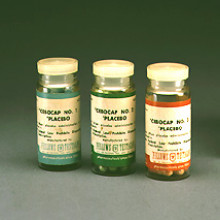
Sugar pills for your ills?
A new survey of doctors in Chicago has shown that nearly half of them have given patients a placebo, or dummy treatment, at some point. Nowadays we usually think of placebos as being used in clinical trials, to compare their effect with that of a genuine treatment.
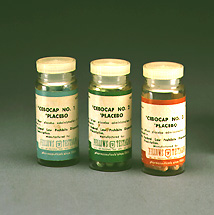 But whereas in the past doctors also used placebos to work out if a patient was really ill or just faking it, but it seems that nearly all the doctors in the survey believed that the dummy treatment might have some benefit - if only psychosomatic.
But whereas in the past doctors also used placebos to work out if a patient was really ill or just faking it, but it seems that nearly all the doctors in the survey believed that the dummy treatment might have some benefit - if only psychosomatic.
The researchers surveyed more than 200 doctors in the city, to find out if they had ever given patients placebos, and discover their attitudes towards other psychological aspects of medicine, such as alternative therapies or doctor-patient communication.
Only around one in ten of the doctors surveyed said they thought that placebos should never be used. The doctors who admitted giving placebo treatments used various terms to describe what they were offering, including "a substance that may help and will not hurt.", "it is medication,"or "it is medicine with no specific effect." Only four percent of the doctors actually said, "it is a placebo."
There is an obvious moral dilemma attached to the use of placebos. Research has shown that they can have beneficial effects - it's not called the placebo effect for nothing - but is it ethical to give patients a dummy treatment? It's clear that there is a growing interest in the connection between mind and body for both doctors and their patients, so it will be interesting to see what happens in the future.

Pollution brain drain
Scientists in the US have found evidence to suggest that exposure to sooty traffic fumes are costing children up to 3 IQ points of intelligence.
 Writing in the American Journal of Epidemiology Harvard researcher Shakira Franco Suglia studied 200 children living in Boston, US, and found that those with the highest exposure to traffic pollution performed less well on intelligence tests than their cleaner-breathing counterparts, even after taking factors such as social class into account. This puts traffic pollution on par with lead in terms of its potential to stunt a child's brain development, although the researchers aren't yet sure exactly which components of exhaust fumes are responsible.
Writing in the American Journal of Epidemiology Harvard researcher Shakira Franco Suglia studied 200 children living in Boston, US, and found that those with the highest exposure to traffic pollution performed less well on intelligence tests than their cleaner-breathing counterparts, even after taking factors such as social class into account. This puts traffic pollution on par with lead in terms of its potential to stunt a child's brain development, although the researchers aren't yet sure exactly which components of exhaust fumes are responsible.
But previous studies on animals suggests that particulates (tiny invisible particles smaller than the body's own cells) are likely to be the culprits. These can enter the bloodstream through the lungs but there is also evidence that they can penetrate into the central nervous system via the nose, travelling along the olfactory nerves that carry the sense of smell into the brain. Once there they can directly damage cells and also trigger inflammation that further injures the brain. So the possibility is not as unlikely as it sounds. Indeed studies on dogs living on the smoggy streets of Mexico City have been shown that animals exposed to the most pollution develop brain damage similar to the changes seen in humans with Alzheimer's Disease.
Now researchers need to track down what components of traffic pollution are responsible and determine how to remove them from the exhaust pipes of the millions of cars and trucks pounding the tarmac of big cities in every part of the world...so don't hold your breath. Or on second thoughts, do hold your breath!
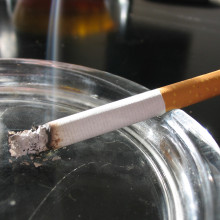
12:23 - Brain Change for Teenage Smokers
Brain Change for Teenage Smokers
with Professor Leslie Jacobsen, Yale University School of Medicine
One of the most common addictions on Earth is the addiction to cigarettes, so tobacco and nicotine addiction. A very interesting study has been done by Professor Leslie Jacobsen, she's at Yale University School of Medicine, looking at how smoking affects the brains of teenagers.
Chris - Hello Leslie...
Leslie - Hello!
Chris - Thank you for joining us on the Naked Scientists, what have you found?
 Leslie - Well we studied 67 teenagers in this group and found that the children or the teenagers who smoked, relative to those who didn't smoke actually had a decline in attention, in particular auditory attention, and at the same time had abnormalities in the structure of their brain that looked like premature developmental changes. The reason why this intrigued us is that, in fact nicotine in tobacco smoke binds to a receptor called the nicotinic acetylcholine receptor that's very important in modulating development in both prenatal and adolescent life.
Leslie - Well we studied 67 teenagers in this group and found that the children or the teenagers who smoked, relative to those who didn't smoke actually had a decline in attention, in particular auditory attention, and at the same time had abnormalities in the structure of their brain that looked like premature developmental changes. The reason why this intrigued us is that, in fact nicotine in tobacco smoke binds to a receptor called the nicotinic acetylcholine receptor that's very important in modulating development in both prenatal and adolescent life.
Chris - So you can actually place the receptor for nicotine, the part of the brain it affects, at the part of the brain you're seeing changes in at this phase in a teenagers development?
Leslie - Right. The receptor is actually very widely present in the brain, it's all over, but we do know from research in rats, in particular by Dr Metherate at the University of California in Irvine, that nicotine can alter the normal development of parts of the brain that support auditory attention. This is very intriguing to us because nicotine exposure during prenatal development leads to a greater risk of impairment in auditory attention and attention deficit hyperactivity disorder. So we actually feel that these findings may show us how this may be happening at least in some children.
Chris - How did you actually make the discovery in the first place?
Leslie - We first recruited teenagers who smoked and those who didn't, and interviewed the mothers of the teenagers as to whether they smoked during the pregnancy and we also obtained birth records to verify the mother's reports. Then we tested them in a special test that looked at auditory and visual attention, and then obtained some MRI scans, which is basically taking a picture, with a very strong magnet, of the brain. We can measure both structure and the maturation of white matter as well as blood flow linked to cognitive work, like paying attention to a task or listening carefully in the presence of distractors.
Chris - And this showed that the children who had either been prenatally, so when their mother was pregnant, exposed to smoking or as teenagers were exposed to smoking, had a greater degree of distractability. It was easier for them to be put off from a task that they were doing when you had some sort of auditory stimulus, some noise or something?
Leslie - Exactly, and the effects were most pronounced when the kids were exposed both prenatally and during adolescence.
Chris - And what about in adults, Leslie?
Leslie - Are you asking whether it reverses during adulthood?
Chris - Well I guess yes, because what we want to know is, a lot of people take up smoking when they're in their teenage years, do they still continue to suffer from these problems into adulthood, or do they get better, or do you not yet know that?
Leslie - We don't specifically know that. It's likely that stopping smoking would improve attention, I think it's worth a try. However what we do know is that acutely when you stop you go through nicotine withdrawal, and that's very hard on attention. So if you already have a deficit in attention and it gets worse during the first few days or weeks of stopping smoking, then I think there's even more pressure to relapse to smoking, if you follow what I'm saying. In other words, this deficit may make it actually harder to quit.
Chris - And you don't think that the people in your study, when they're in the brain scanner, were feeling a bit nicotine deprived and this was putting them off from doing the trial properly, because normally they would have been smoking?
Leslie - We actually studied the smokers, we didn't ask them to stop smoking for this study and they often took a smoke break right before they took a scan. We measured their nicotine plasma concentrations and they were very much in a stable area that was consistent with smoking. They were not in nicotine withdrawal.
Chris - So where are you going to take this next?
Leslie - Well the next question I think we have here is whether we can measure changes early after pre-natal exposure. We're working to develop a study that will recruit infants with and without exposure, look at brain structure using the MRI scanner, which is very safe, and then follow them prospectively. The idea here is to identify what infants are affected and then of course whether we can develop therapies that will improve their attention and reduce their risk of smoking and other problems that come from inattention, like school failure.
Chris - Well let's hope that it isn't permanent, Leslie, thank you very much.
Leslie - My pleasure.
Chris - That's Professor Leslie Jacobsen, she's from Yale University School of Medicine and has found that people who are exposed to nicotine, as their mother smoking for instance when they're in the womb, or as a teenager, can have consequences for the structure of their brain as they get older.
Kat - Scary stuff. And if your New Years resolution was to give up smoking, and it's not too late - it's never too late to give up smoking! If you do want help with that the best thing to do is to go to your GP and they can put you in touch with the NHS stop smoking services - best way to give up.
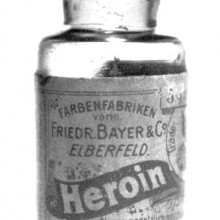
22:10 - Addiction - What gets people Hooked?
Addiction - What gets people Hooked?
with Professor Barry Everitt, Cambridge University
We are talking about the science of addiction. We're joined in the studio by Professor Barry Everitt, who's Professor of Behavioural Neuroscience here at Cambridge University. Good evening, how are you doing?
Barry - Fine, thank you!
Kat - Excellent, now we're gonna start by talking about - what is addiction? What does it mean when we talk about someone who is addicted to something?
 Barry - Well, I think the easiest way to think about an individual who is addicted is someone who compulsively uses drugs, seeks and uses drugs at the expense of other activities and finds it impossible to relinquish that drug-seeking/drug-taking habit. The essence of addiction is compulsive or out of control use which really differentiates it from the kind of drug-taking that many people do at some point in their lives where they take drugs like cigarettes. It's easy to think about cigarettes or alcohol: you smoke and you may drink to experience the effects of the compounds in tobacco smoke and alcohol itself. Having done that, some individuals are vulnerable to these effects and they go on to keep using and using. They lose control over that use and gradually progress to the stage where it becomes addiction.
Barry - Well, I think the easiest way to think about an individual who is addicted is someone who compulsively uses drugs, seeks and uses drugs at the expense of other activities and finds it impossible to relinquish that drug-seeking/drug-taking habit. The essence of addiction is compulsive or out of control use which really differentiates it from the kind of drug-taking that many people do at some point in their lives where they take drugs like cigarettes. It's easy to think about cigarettes or alcohol: you smoke and you may drink to experience the effects of the compounds in tobacco smoke and alcohol itself. Having done that, some individuals are vulnerable to these effects and they go on to keep using and using. They lose control over that use and gradually progress to the stage where it becomes addiction.
Kat - What's going on in the brain when someone, say, is becoming an addict to drugs or alcohol - what sort of changes are going on there?
Barry - Very complex changes. For many years research in this area has focussed on what might be the mechanism that mediates the effects of drugs and it's in this context that a particular chemical messenger in the brain, dopamine, has been implicated. It seems that many drugs from different classes: nicotine, cocaine, heroine, alcohol - all individually different drugs - all have this ability to increase dopamine in particular parts of the brain. This may be a key element of why the drugs are initially positive in terms of their effects. That doesn't explain the progression to a more compulsive form of drug use. This really moves beyond the realms of a simple chemical messenger system to encompass adaptation to the chronic taking of the drug in many parts of the brain.
Kat - Why can one person have a drink and it's fine and someone else will become an alcoholic if it's all the same systems?
Barry - That's the key question. We tend to talk about vulnerability. Vulnerability is undoubtedly in part genetically determined. There's been some progression in understanding in what vulnerability means.
Kat - So are we talking about an addictive personality?
Barry - Yes, but not in the sense that addicts are simply born and not made. This isn't a single gene type of disorder. It's a behavioural trait that's under the regulation of many different genes. We know about one of those traits in particular from quite recent research which is that individuals who have an impulsive trait or an impulsive tendency (in other words they respond rather too quickly and without sampling the environment) tend, if they're given exposure to drugs, not simply to take them more readily but to escalate their intake. Having escalated their intake, they then undergo a series of adaptations to the brain which sees them progress into compulsive use so that they can't stop.
Kat - So that's the sort of thing. There's a slight thing I want to digress on to which is that some people can become addicted to chemical things like drugs and alcohol and some people seem to be addicted to physical behaviours. Chris you've got some examples:
 Chris - I've got an email here from Sam Key. He says, 'I'm a high school teacher and music teacher in Brisbane, Australia. I really enjoy listening to the podcast version of the programme whilst I'm having a cup of tea or coffee.' Therein lies the clue, 'about a month ago I decided to cut back on my caffeine intake and decided to quit cold turkey. Unfortunately, it was a school day and by lunch time I had a splitting headache and was very moody. My students asked me why I was a bit grumpy and they convinced me to have a cup of coffee at lunchtime and to give up coffee during the holidays. What's happening to cause this?'
Chris - I've got an email here from Sam Key. He says, 'I'm a high school teacher and music teacher in Brisbane, Australia. I really enjoy listening to the podcast version of the programme whilst I'm having a cup of tea or coffee.' Therein lies the clue, 'about a month ago I decided to cut back on my caffeine intake and decided to quit cold turkey. Unfortunately, it was a school day and by lunch time I had a splitting headache and was very moody. My students asked me why I was a bit grumpy and they convinced me to have a cup of coffee at lunchtime and to give up coffee during the holidays. What's happening to cause this?'
Barry - Well, what happens - if you're going to have an addition this isn't a bad one to have because it's (a) quite trivial and (b) quite easy to relinquish. What happens with people who drink coffee and drink coffee very frequently is that they develop tolerance to the caffeine that's in the coffee. As they develop tolerance to the caffeine: when the caffeine isn't there they experience discomfort in the form of withdrawal which can be things like a headache and it can be also maybe minor mood changes but sometimes even things like palpitations that come with withdrawal from caffeine. You then take more caffeine and you have to do that more and more frequently until eventually you have a situation where people are drinking vast quantities or coffee and caffeine or tea and caffeine during the day. Then when they suddenly stop and decide to go cold turkey - it often happens to people on weekends actually, when they take coffee during the week to stay active at work and then at the weekend they tend to take less. They have headaches and they feel bad. If you just stay with that withdrawal symptom for a couple of days it disappears.
Chris - But not with heroin, presumably?
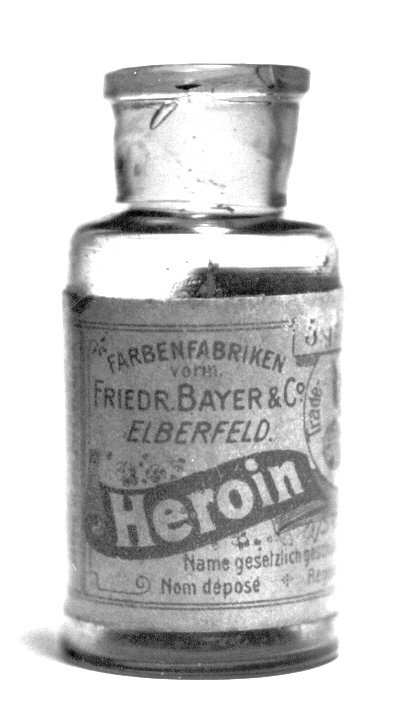 Barry - Well, with heroin there's also a physical withdrawal syndrome which, a major theory of addiction says, individuals will take heroin not so much to get the positive effects of the drug but to stop feeling so bad when you're in a state of withdrawal. But that's neither necessary nor sufficient to explain the compulsive use of heroin and many addicts will use heroin over a long period of time without ever undergoing withdrawal. Withdrawal illness is not a necessary and sufficient condition for addiction.
Barry - Well, with heroin there's also a physical withdrawal syndrome which, a major theory of addiction says, individuals will take heroin not so much to get the positive effects of the drug but to stop feeling so bad when you're in a state of withdrawal. But that's neither necessary nor sufficient to explain the compulsive use of heroin and many addicts will use heroin over a long period of time without ever undergoing withdrawal. Withdrawal illness is not a necessary and sufficient condition for addiction.
Kat - And very briefly, what about people who can get addicted to physical behaviours and these kinds of things? We had someone who says they think they're addicted to internet porn. Is that the same kind of mechanism that's going on as well?
Barry - Well, who knows whether there are any mechanisms that are the same that are going on? I think to some extent there is an issue of semantics here. Maybe it's easier to think in terms again of compulsive use: that individuals may engage in behaviours that they find difficult to relinquish. You could describe that as being addicted. I would prefer to say that they were compulsive visitors to internet porn sites and were doing that rather than undergoing some state or withdrawal or whatever, if they didn't have access.
Chris - Barry, why has the brain got a system in it that lets us get addicted to things? It seems like it's such a bad thing to have because we've outlined a few bad examples. Why should we have that wiring?
Barry - It isn't there so that you can get addicted. It's presumably there because you need a mechanism in the brain that mediates the positive effects of natural goals and rewards like food and drink and social rewards and effective systems. Like any system in the brain it consists of groups of neurones in the brain that talk to each other and they have chemical messengers. The chemical messengers in this system happen to be ones that are potently affected by drugs that are taken. So you get a kind of a superhit on the chemical systems which is probably, at least early on, a part of the mechanism that causes you to seek that hit again and again.
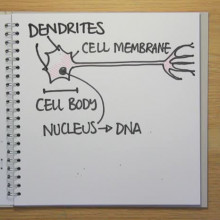
29:57 - How Addiction Shapes the Brain
How Addiction Shapes the Brain
with Professor Julie Kauer, Brown University
Professor Barry Everitt introduced us to some of the mechanisms behind addiction, and how it affects brain chemistry. Also working on the effect of addiction on the brain is Professor Julie Kauer, from Brown University.
Chris - Now, you've been studying some of the connections in the brain. Tell us what you found.
Julie - Well, let's see. Briefly, there's been a growing theory in the field of people who study cellular changes that occur during addiction. The changes that occur in the brain are somewhat akin to those that occur with learning and memory. Over the last ten years or so there's been a growing number of research papers looking at this problem and trying to see whether or not the changes that occur in parts of the brain involved in say, dopaminergic function as Barry was mentioning, may be similar to those that happen in parts of the brain involved in memory.
Chris - So the same way as you learn your maths homework, you also learn to take drugs. What's the reward then in doing your maths homework versus the reward you get for taking drugs because drugs, temporarily, can change your mood. That's the attraction to most people of using them. Whereas learning and memory: what's the reward?
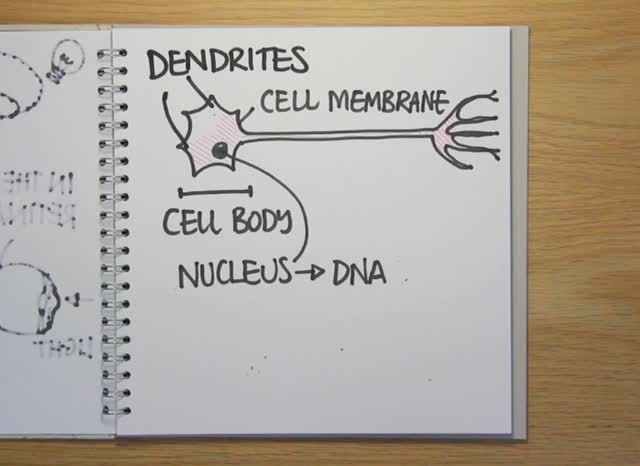 Julie - It's a little more complicated that that. It's a more basic mechanism that is similar between the two processes. It's not simply a learning to be addicted to a drug because it's rewarding whereas you may not find maths as rewarding. Instead the changes that occur during learning are a strengthening of the synapses, which is the connection between two neurons. There's considerable evidence that during learning what happens is that the synapses, the connections between cells, become stronger in parts of the brain that serve memory. However, in the parts of the brain that subserve addiction, as Barry mentioned before, the reinforcement for natural rewarding stimuli and things that are important for survival; the strengthening of those synapses that occurs by drug abuse may have pathological effect on the system that actually directly taps in to long-lasting, maladaptive changes in that circuitry. It's not that the same circuits that you're learning with during your maths homework are altered during your use of cocaine but rather it's a different part of the brain in which maybe the changes in synaptic strength are not appropriate and are perhaps even beyond what should normally happen with rewarding stimuli.
Julie - It's a little more complicated that that. It's a more basic mechanism that is similar between the two processes. It's not simply a learning to be addicted to a drug because it's rewarding whereas you may not find maths as rewarding. Instead the changes that occur during learning are a strengthening of the synapses, which is the connection between two neurons. There's considerable evidence that during learning what happens is that the synapses, the connections between cells, become stronger in parts of the brain that serve memory. However, in the parts of the brain that subserve addiction, as Barry mentioned before, the reinforcement for natural rewarding stimuli and things that are important for survival; the strengthening of those synapses that occurs by drug abuse may have pathological effect on the system that actually directly taps in to long-lasting, maladaptive changes in that circuitry. It's not that the same circuits that you're learning with during your maths homework are altered during your use of cocaine but rather it's a different part of the brain in which maybe the changes in synaptic strength are not appropriate and are perhaps even beyond what should normally happen with rewarding stimuli.
Chris - When we learn something we have a connection between nerve cell A and nerve cell B and that connection can be strengthened or weakened and that's the learning experience. How are you proposing that addictive drugs can affect that process? What's going on?
Julie - We found two things. First of all there's considerable evidence the neurons released dopamine which seems to play a key role in early response to drugs. Those neurons can be controlled by excitatory input onto them or inhibitory inputs onto them. There's a lot of evidence that a single exposure to a drug of abuse (and this seems to be multiple drugs from ethanol/alcohol to cocaine) all produce a strengthening of the excitatory synapses which then would drive those dopamine neurons to fire more frequently and for long periods of time which may contribute to the early effects of drugs. The other way that you could increase the firing and activity of dopamine neurons would be to reduce inhibitory inputs onto them. What my lab found was that a normal process that seems to occur is potentiating of those inhibitory circuits. This may exist as a way to balance the potentiating of excitatory synapses in a normal, healthy brain. What we found, intriguingly, was that if an animal was given morphine and then we looked 24 hours later we found that the inhibitory potentiation was completely absent.
Chris - So does this mean that potentially, one exposure to one of these nasty agents could have life-long consequences?
Julie - I don't know the answer to that question and we're very interested in finding it out. Clearly the work that my lab's been interested in can only really speak for initial effects of drugs. Very clearly, in most cases a single exposure to one of these drugs does not produce addiction. However, it's possible that taking the drug even once sets the stage, in a way, for the vulnerability issue.
Chris - Just very briefly to finish off, Julie, given that you've found this new mechanism or you're uncovering this new way of thinking about how addiction occurs you've therefore got another way to think about how to break an addiction. Could we block this process and therefore treat people who have an addition to various drugs via a new way?
Julie - The work that we have carried out has pinpointed a single molecule in this dopaminergic brain region called guanylate cyclase. What may be true is that if we were to modulate this drug target at the same time that an addictive drug like morphine were delivered to a person that we might be able to ameliorate any addictive properties of the drug that would develop over time without affecting its analgesic effects. As morphine is given frequently in the hospital, all the time, this might be a useful process. We don't know whether targeting this molecule would be able to reverse addiction which is clearly a very persistent problem.
Chris - It still sounds like a very fertile area to look into.
Is it true that people with low serotonin tend towards addiction?
We put this question to Professor Barry Everitt, Professor of Behavioural Neuroscience at Cambridge University
It's an interesting and good question. The answer is a difficult one to provide. What we do know is that individuals who are in withdrawal from drugs tend to have reduced levels of serotonin in key parts of the brain where the other transmitter I mentioned earlier, dopamine, is also important. There is a notion that one of the things that might cause you to take drugs again is an attempt to self-medicate, if you like, that lower level of serotonin in these key parts of the brain. That might be an interesting mechanism. Clearly serotonin is very closely linked to mood change and withdrawal induced mood change is a really quite difficult early problem for people trying to stay off drugs.
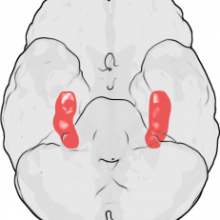
36:44 - Rising Stars - Hippocampi and Taxi Drivers
Rising Stars - Hippocampi and Taxi Drivers
with Hannah Critchlow
Now, we've got a new feature for the New Year. Each term Cambridge University's Rising Stars project helps young researchers to tell the world about their work. We teamed up with a group of rising stars so that you can find out what the next generation of top scientists are up to. Seeing as we've been talking about the brain this week we thought we would start you off with a neuroscientist. Here's this week's rising star and that's Hannah Critchlow.
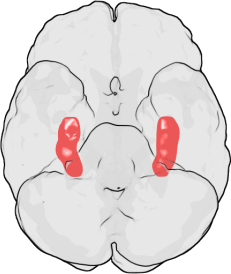 Hannah - What happens to our brains as we learn, remember and forget? Are there any physical changes we can see? Can we develop new drugs to improve our memories and turn us all into know-it-alls? How do you link taxi drivers, seahorses and spines? The brain is the most complicated and active part of our body, accounting for just two percent of our total body mass yet greedily consuming over 20% of our daily energy quota. The brain is only 1.5kg. But for neuroscientists like myself the brain presents the most enigmatic questions of the entire body. There are over 100 billion nerve cells in our brains and each cell is connected with up to ten thousand others. Communicating with each other like an intricately designed and sometimes flawed computer network system. One brain region that I'm particularly interested in is the hippocampus which is shaped like a seahorse from the Greek hippos, meaning horse and campi, meaning curve. Research on the hippocampus has provided insight into its function. Hippocampi brain injury patients have problems with learning, spatial navigation, memory and planning: showing that this region is involved in these higher cognitive functions. Scientists at University College London have found that London taxi drivers have substantially larger hippocampi than most people. It seems that by using their spatial navigation skills and memory, London cabbies exercise part of their hippocampi and increase its volume in much the same way that physical exercise builds muscles. The biggest ever winning score on Mastermind? A cabbie. He must have packed an extremely large seahorse.
Hannah - What happens to our brains as we learn, remember and forget? Are there any physical changes we can see? Can we develop new drugs to improve our memories and turn us all into know-it-alls? How do you link taxi drivers, seahorses and spines? The brain is the most complicated and active part of our body, accounting for just two percent of our total body mass yet greedily consuming over 20% of our daily energy quota. The brain is only 1.5kg. But for neuroscientists like myself the brain presents the most enigmatic questions of the entire body. There are over 100 billion nerve cells in our brains and each cell is connected with up to ten thousand others. Communicating with each other like an intricately designed and sometimes flawed computer network system. One brain region that I'm particularly interested in is the hippocampus which is shaped like a seahorse from the Greek hippos, meaning horse and campi, meaning curve. Research on the hippocampus has provided insight into its function. Hippocampi brain injury patients have problems with learning, spatial navigation, memory and planning: showing that this region is involved in these higher cognitive functions. Scientists at University College London have found that London taxi drivers have substantially larger hippocampi than most people. It seems that by using their spatial navigation skills and memory, London cabbies exercise part of their hippocampi and increase its volume in much the same way that physical exercise builds muscles. The biggest ever winning score on Mastermind? A cabbie. He must have packed an extremely large seahorse.
Schizophrenic patients in contrast, have smaller hippocampi volumes. I'm interested in the reason why. New research has shown the schizophrenic patients have fewer connections between their nerve cells, thereby accounting for their smaller hippocampi. The majority of connectivity between brain cells occurs on structures called dendritic spines which are miniscule: one thousand, five hundred time smaller than a pinhead. Dendritic spines extend from nerve cells like buds extending from a twig. New dendritic spines form as we learn, becoming stable, mature spines as we memorise. Schizophrenic patients have fewer dendritic spines than healthy individuals. This might also be why they show impairments and cognition. If you imagine an aerial shot of London with many different roads branching off between landmarks this could be compared to a healthy functioning brain with high levels of connectivity. On the other hand, a schizophrenic patient's brain would resemble the less convoluted road system of a newer city with fewer connections.
My investigations have shown that we could potentially improve the treatment of schizophrenia by designing new drugs which specifically cultivate dendritic spine formation. As a by-product of this we may also uncover new ways of boosting memory power for students like myself. Heady implications.

40:13 - Why do Diets Fail?
Why do Diets Fail?
with Dr Toni Steer, MRC Human Nutrition Research Lab
It's that time of the year when everyone is thinking, 'how many inches extra feet, pounds, stone have I gained over Christmas? How am I going to get rid of it all?' Well we thought we'd take a look at the science of dieting and we've invited Dr Toni Steer to join us. She's from the MRC Human Nutrition Research Lab and, speaking with Chris Smith, she explains the basics of dieting. So what is a diet?
Toni - Normally most people understand diet as something where you restrict your calories in order to actually lose weight. I think therein lies the problem. By saying 'diet' you seem to imply that it's something that you're going to do temporarily. Once you've lost the weight you're then going to go back to what you were normally doing before. I think that that's what most people understand a diet to be.
Chris - So in other words it's flawed from the start because unless you're going for a long-term change you're going to put yourself back in the situation that led to you being overweight in the first place and therefore the weight will come back on.
Toni - Absolutely. I think people set themselves huge expectations of what their weight loss is going to be. I think there was a study in America which asked very overweight women how much body weight they would like to lose. Most of them said they'd like to lose around a third of their body weight, which is a huge amount. We have this big expectation of weight loss and that we're gonna put the years of weight gain right in six weeks with this magic diet.
Chris - I blame the newspapers a little bit because every summer when people are going to go on holiday you see this, 'crash diet, lose x amount of stone in six weeks so that you'll look great on the beach.'
Toni - Absolutely. People focus very much on the aesthetics of weight loss so it's all about getting in to your size ten bikini. What we need to communicate a lot better is actually the health benefits of very modest weight loss. There was a very big study in America looking at people who were overweight and about to develop type 2 diabetes. What they did was over the course of three or four years they got them to lose or maintain a weight loss of around 4 kilos (1/2 a stone). What they found was that, ok they hadn't had a massive amount of weight loss, but they'd significantly reduced their risk of getting type 2 diabetes by up to 50%.
Chris - We can tell people who are a bit chubby, 'your blood pressure's a bit on the high side, if you lose some weight it'll come down and it'll come down enough that we won't even have to give you drugs for high blood pressure.' Even so it doesn't really help in my experience that much.
Toni - It's incredibly difficult. We're living in an environment where there's readily available food 24 hours a day, seven days a week. The environment is incredibly difficult for most people to manage. So yes, the individual can do a certain amount but actually we need to look t some of the bigger issues around: town planning and transport and those kinds of things.
Chris - To get more active? Because presumably that's the bottom line? Energy in = energy out. We either cut down the energy in or we increase the energy out in order to balance things out.
Toni - Ideally you need to do both. So you need to look at both sides of the energy balance equation. You need to eat less and do more.
Chris - If you could just give us a checkpoint plan as to what you would put on a healthy diet or a good strategy to slim down after Christmas. What would you advise?
Toni - Okay. Key strategies for weight loss. First thing is start from where you are. Do a food diary, have a look at what you're really eating, have a look at some of your triggers for where you may be reaching for those extra calories like chocolate bars. Then you need to cut down your energy density. That's looking at calories per bite. So energy dense foods tend to be those that are high in fat. Reducing high fat foods, increasing your low energy density foods which are your fruit and veg, high fibre foods, choosing low fat dairy and getting out of the chair and exercising more.
Kat - Presumably my colleague's strategy of just eating a cucumber for lunch is not doing very well?
Toni - If you try to make really drastic changes to your diet it's really difficult to sustain those over the long term. Your dietary habits, if you think about it, have been built up over years and decades. To break those by just thinking, right that's it, I'm just going to eat cucumber for the next six weeks - it's just not realistic or sustainable.
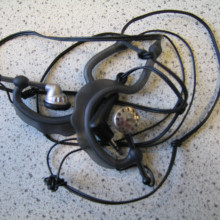
44:35 - Why do wires tangle?
Why do wires tangle?
We put this question to Mike Pearson, from Cambridge University's Millennium Mathematics Project...
I hear that someone has called in asking about the fact that their headphones get in a mess whenever they put them into a bag.
This is one of those things that seems to happen rather more often than it should. It's kind of surprising what damage a mindless bag can do.
There are many more tangled possibilities than there are untangled possibilities if you think of the wires in the bag. In a way, just picking one of those tangles is quite improbable but it doesn't really matter. Any old tangled state will do, so the probability that one of those tangle states appears when you put your hand into the bag to get your cables out is actually quite high.
All we need is something that will allow those wires to move within the bag. We need them to pick up some energy from somewhere - and jiggling those headphones around is going to be exactly what we need - in order to generate the randomness - the chaos - that we need in order to create all these knots. Any old knot will do.
An analogy we might look at is the cells of our body: tThere's an enormous problem that they have keeping all the DNA that they have organised inside the nucleus. You can think of the nucleus as being a tiny, tiny little bag. It's only about 20µm big. The DNA is a big, long string or wire about 3m long. That's the equivalent, if you imagine it, of having an iPod cable 30km long stuffed into a 20cm bag. How this all happens is quite a problem, which has puzzled both biologists and mathematicians a lot.
What is ageing?
It's both. Cells in the body are pre-programmed with a finite lifespan and a finite number of times that they can divide (split) to form daughter cells. For example, the red blood cells that carry oxygen to our tissues have a lifetime of 120 days after which they wear out and are broken down so that their constituents can be recycled. At the same time other cell types such as muscle and nerves can survive for much longer, even a lifetime, whilst the cells lining the mouth and intestines might last less than a day before being scraped off during a meal.
These cells are replaced by stem cells that divide (split) through the process of mitosis. However, scientists have found that every cell has a built-in limit on the number of times it can divide like this, known as the Hayflick number. This occurs because the ends of the DNA chromosomes contain structures called telomeres, which are similar in some ways to the piece of tape that protects the free ends of a shoelace. Whenever a cell divides a small amount of material is lost from each telomere. Eventually, after about thirty to forty cell divisions, the telomeres become too short and the cell can no longer divide. At this stage it's said to be senescent (aged). Stem cells can also be forced into early senescence if their DNA becomes damaged. Switching the cell off like this is a protective mechanism to guard against cancer, which can occur when genetic changes (mutations) inappropriately activate a cell's growth systems.
This DNA damage is usually caused by reactive chemicals called free radicals that are produced by metabolism, by toxins we take into the body in things like cigarette smoke and by exposure to sunlight. Thankfully, vitamins and other anti-oxidants help to protect cells from the effects of radicals, which is why eating a healthy diet rich in antioxidants can help to slow down the ageing process.
Nevertheless, as we age the number of stem cells capable of producing new cells to repair damage, replace lost cells and react to infections steadily declines. This means that fewer resources are devoted to repair and growth causing tissues to steadily deteriorate, and that's why skin goes wrinkly!

Are high doses of vitamin C useful?
Chris and Kat discussed this one...
Chris: Linus Pauling, who got the Nobel Prize in Chemistry, used to take mega doses vitamin C and he did live to be in his 90s; but then so do lots of people who don't take mega doses of vitamin C.
People have done clinical trials on this to see if taking vitamin C does translate into better health. The evidence is that, if you are vitamin C deficient and you get scurvy, that's very bad, but you don't need very much vitamin C in order not to get scurvy. Scurvy's incredibly rare in the population now. Warding off scurvy's probably not a good enough reason to take mega doses of vitamin C.
In terms of warding off coughs and colds and things there have been a number of trials and the only one that really showed any major benefit was in Scandinavian cross-country skiers who took big doses of vitamin C. They found that with severe exercise they were at slightly lower risk of catching a virus of some kind if they took the vitamin C compared with when they didn't, probably because if you're exposed to harsh conditions - cold air - your airways are getting very dried out; perhaps the vitamin C helps to ward off the damage to your airways caused by those conditions and therefore reduces the risk of the airways becoming vulnerable to viral attack.
Under normal circumstances, I haven't found any evidence that people are better protected if they take vitamin C.
Kat: There was also a paper, I think, about a year or so ago that showed actually if you take vitamin supplements you're more likely to die.
Chris: There was one showing that for vitamin E. Everyone put themselves on vitamin E thinking, 'because this dissolves in fat perhaps it will reduce the rate at which arteries get clogged up by reducing cholesterol.' When cholesterol is oxidised it's more likely to block up arteries. If you take something that dissolves in fats and hence is close to the cholesterol (vitamin E) perhaps that will stop it. People who are on vitamin E started to have more heart attacks than people who weren't, so not very good news...
Why do you go red when sunburnt?
Chris and Kat discussed this question on the show...
Kat: What's happening is inflammation. When you get sunburn the ultraviolet rays from the sun come in, damage the DNA in your skin. If they damage it really severely then your skin cells will die in order to protect you from cancer because your DNA's damaged. Dying cells attract the immune system. They attract immune cells like macrophages that have to come in and eat up the dead cells. That encourages inflammation so you've got all these molecules called cytokines being produced. You've got inflammation redness, you may notice swelling as well if you get really sunburned. That's what's going on.Chris: Would anti-inflammatories like aspirin make you feel better if you've got sunburn?Kat: They're help to relive the pain and they may help to take the inflammation down but of course the most sensible thing is don't get sunburnt in the first place. Chris: What about sunbeds? I was reading a statistic the other day. It's a totally unregulated industry. In one case there was a set of sunbeds where the UV was five times stronger than you'd get from the noonday sun on an Australian beach. Kat: I know and that's a very interesting issue. In Scotland this week, in the Parliament there they're having a debate about whether the sunbed industry should be regulated and particularly whether the sunbed should be banned for people under 18 because at that age your skin is very sensitive to this kind of damage from the sunlight and also from the ultraviolet radiation in sunbeds. At the moment, particularly in the UK sunbeds are pretty much unregulated. There's a voluntary code of conduct from the sunbed association that parlours can sign up to but it's not compulsory. Chris: So they could be harmful. You could actually be doing yourself a lot of damage because, how much have they been standardised: what dose you're getting and what it's doing to you?
Kat: Absolutely, we would recommend people to steer clear of sunbeds generally. Especially using them excessively and do watch out because they are damaging your skin and if you overdo it you are increasing your risk of skin cancer. Chris: And you will end up looking like a prune.
- Previous Population, Fuel and Sonic Booms!
- Next Diet, The Brain and Meteors











Comments
Add a comment